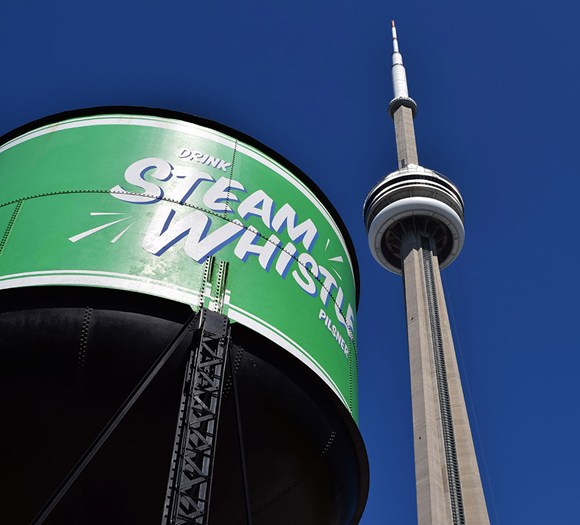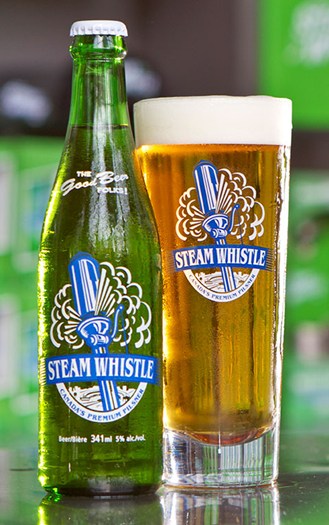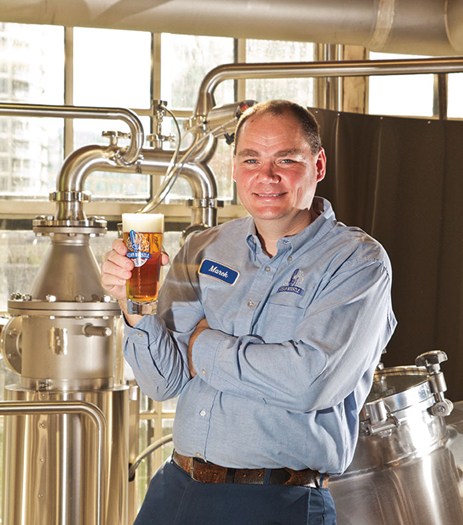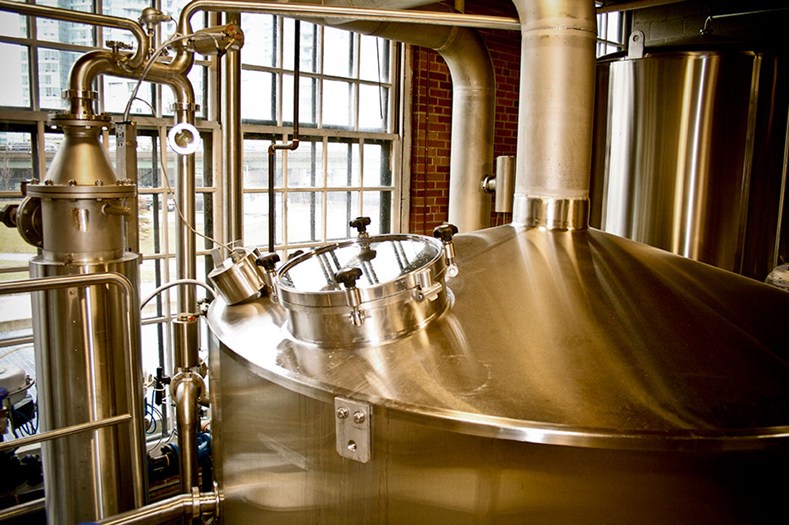TORONTO - The CN Tower might be this city’s most famous landmark, but it doesn’t hold a whistle, er, candle to Toronto’s hidden gem: Steam Whistle Brewing. Some might say that the brewery’s location in the historic John St. Roundhouse should vault Steam Whistle to the top of the city’s attractions list. After all, the Roundhouse was built in 1929 as a Canadian Pacific Railway steam locomotive repair facility. It closed in 1988 and sat empty for about 10 years before Steam Whistle moved in. Steam Whistle’s first bottles rolled off the line in 2000.
It’s not just the building, though, but the brewery itself that has a unique story. After all, only by visiting Steam Whistle can you say you’ve been to the sole North American brewery to produce just one beer, a pilsner so beloved it’s now as much a part of the Canadian culture as maple syrup.
In fact, although Steam Whistle is distributed coast-to-coast in Canada, it remains fiercely loyal to its roots. Canada is currently the only place you’ll find Steam Whistle.
And if you’re an environmental-minded cerevisaphile, there’s another reason to love this brewery. Steam Whistle, which produces about 150,000 barrels per year (the equivalent of about 417,000 bottles per week), is Canada’s greenest brewery.
Need more convincing to visit? Perhaps the free sample will be enough to drive you in. Or in my case, walk in from my “home” base at the Fairmont Royal York Hotel.
It’s not only a Friday afternoon but also a sweltering summer day when I visit, which may explain why the brewery is packed. I have no problem scoring my free sample, though, and I love my first sip. The European-style pilsner is smooth, reminding me of Stella Artois, which along with Heineken, is Steam Whistle’s main competition.


Left: Steam Whistle Right: The brewery only makes one Pilsner brew because it wants to do one thing right.
The beer is also as natural as natural can be.
“Our environmental platform begins with the beer,” says Sybil Taylor, communications director, who leads me on a tour.
In Canada, breweries are allowed to put any one of 100-plus ingredients in beer, but Steam Whistle uses only four: spring water, malted barley, German hops and yeast.
Another impressive feat? All of the ingredients are certified free of GMOs (genetically modified organisms). Steam Whistle was the first Canadian brewery to achieve this.
I’ve toured many breweries, but as I walk through Steam Whistle (tours are offered every day except Christmas and New Year’s Day), it’s clear this brewery is in a class of its own. Not only is it impeccably clean, in an odd way, it’s also one of the most beautiful, thanks in large part to the many windows that allow natural light to stream in. The brewery also features artwork by up-and-coming artists. When I mention this to Sybil, she offers an interesting analogy.
“It’s like the Willy Wonka of beer factories,” she says.
Not only does beer alone inspire everybody to be in a good mood, the brewery also offers a full-sensory experience.
“You get to see the natural ingredients being transformed into an award-winning craft brew, feel the heat of the brewhouse, smell the bready aromas of the barley and floral aromas of the hops, hear the bottles moving along the conveyors and taste our pilsner fresh off the line,” says Sybil.
What quickly becomes apparent, though, is just how darned green this brewery is. For instance, when Steam Whistle installed a new brewhouse in 2008, it cut its water waste output by a third. The steam coming off the top of the brewing vessels is captured and used to produce all of the brewery’s hot water needs, and 100 per cent of the electricity used by the brewery comes from renewable sources like wind and low-impact hydro generators.


Left: Brewmaster Marek Mikunda is a proud producer. Right: Natural light bounces off the kettles in the Steam Whistle brewery and makes them look like art pieces.
In addition, Steam Whistle diverts about 95 per cent of its waste away from landfills. How? Any organic waste is composted, and any food left over from the hundreds of events the brewery hosts each year is sent to a local street mission or women’s shelter. The brewery also encourages employees to engage in “clean air” commuting, using either bike paths or commuter trains to arrive and depart from work.
And then there’s the green bottle, which contains 30 per cent more glass than standard beer bottles and can be reused up to 45 to 50 times before breaking.
There are two things you need to notice on the bottle. First, the born-on date, which includes month, day and year. Steam Whistle actually considers any bottle over three months not to be fresh. The other? The “3FG” insignia inscribed on the front of every bottle.
Some inside scoop: The brewery was the brainchild of three guys who had all lost their jobs. They decided to open a brewery, which they initially named Three Fired Guys (3FG) Brewery. The name didn’t stick— later, the founders stumbled upon Steam Whistle when they envisioned putting a whistle on top of the brewery to signal the day’s end and ultimately, time for a reward in the form of good craft beer — but the insignia did. And yes, the brewery does boast a steam whistle, which you can pull. (If you do, make sure you give it a hearty tug.)
Yet one question is nagging me. I know the brewery’s mantra is “Do one thing really, really well,” but seriously, why just one beer?
“We believe that if you focus on one thing, you can perfect it and become a true expert, like an Olympic athlete who forsakes all else in life to become a world champion,” Sybil says. “We want to become the pilsner expert and make our pilsner better and better.”
My take? The only way Steam Whistle could get better is if I could buy it in the States where I live. Until then, follow my strategy and bring a bigger suitcase.
About the Author
Karen Asp is a health-conscious travel junkie who counts Paris, Chicago, Barcelona, and Jackson Hole, Wyo., among her favourite places. She loves travelling anywhere that adventure – whether physical or cultural – abounds. Some of her most memorable experiences were: Swimming with penguins in the Galapagos; hiking the Inca Trail into Machu Picchu; logging two 10Ks on two different continents (Australia and North America) on the same day, and tandem paragliding in Jackson Hole. Along with being an avid craft brew and gelato fan, she holds five world records in Nordic walking and a full-time career as a journalist. She’s a contributing editor for Woman’s Day and writes for numerous other leading publications, including Islands, More, O, SELF, Health, Parade, Prevention, Better Homes and Gardens, Real Simple, Travelife, Shape and Martha Stewart Living.